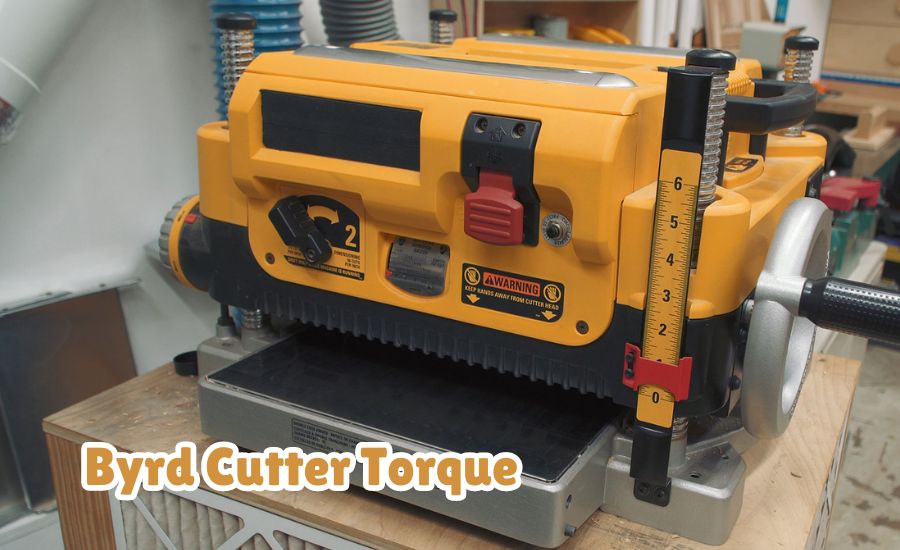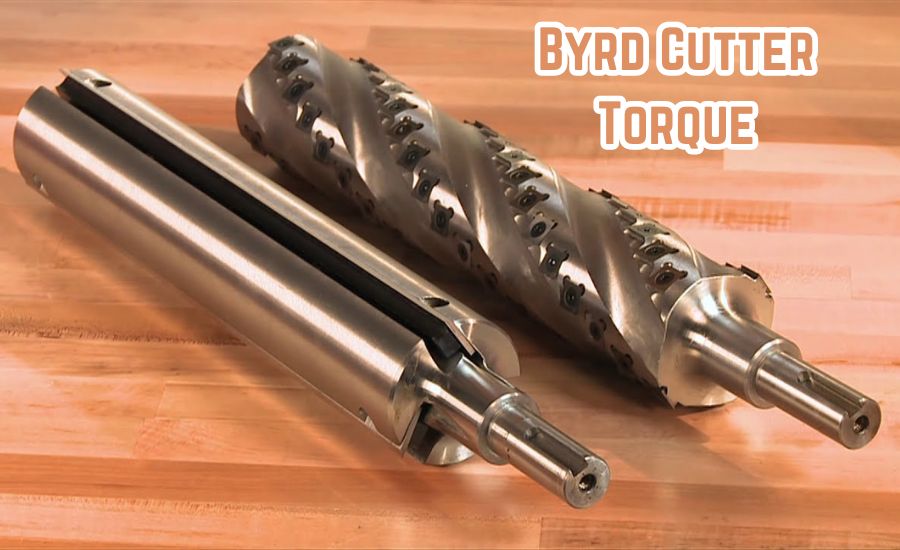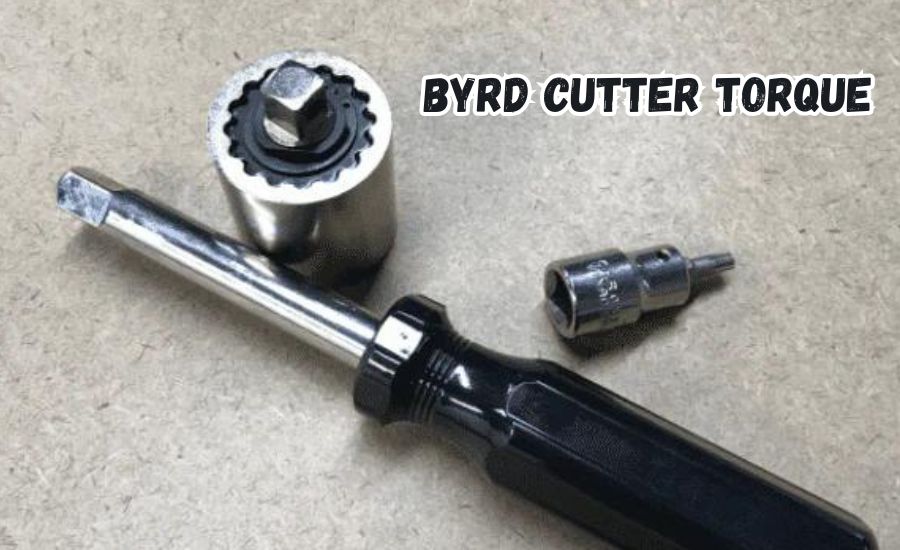Byrd cutter torque is a key part of getting smooth, precise cuts in your woodworking projects. Understanding how Byrd cutter torque works can help you get the best results, whether you are cutting hardwood or softwood.
By learning how to adjust Byrd cutter torque, you can make sure your cuts are clean, sharp, and done with less effort. In this post, we will explore the simple ways to improve your woodworking by using Byrd cutter torque the right way!
What is Byrd Cutter Torque and Why Does It Matter?
Byrd cutter torque is the force that makes a Byrd cutter spin and cut through wood. It’s like the engine of your car—without enough torque, the cutter won’t work as well. For woodworkers, it’s important to understand how this force helps get smoother cuts and easier operation.
The torque in a Byrd cutter helps push the blades through tough and soft woods. If you don’t have the right amount of torque, you might struggle with rough cuts, or worse, damage your tools. Understanding how it works makes a big difference in how good your woodworking looks.
By learning more about Byrd cutter torque, even beginners can start to get better results. Knowing how to control it lets you create smooth edges and cleaner surfaces on any type of wood.
How Byrd Cutter Torque Improves Woodworking Precision

Getting precise cuts is what every woodworker wants, and Byrd cutter torque plays a huge role in that. When the torque is adjusted properly, the blades cut evenly through the wood, leaving you with a smooth, clean surface that doesn’t need much sanding.
Torque helps reduce the tear-out that can happen with some cutters. With the right torque, the blades glide through the wood instead of tearing it apart. This is especially helpful when working with hardwoods that are harder to cut cleanly.
Having the right amount of torque means your cuts will be more accurate. It helps you keep control over the cutter, even when you’re working on detailed projects that need extra precision.
Simple Ways to Adjust Byrd Cutter Torque for Better Results
Adjusting Byrd cutter torque is simple if you follow a few easy steps. First, make sure your cutter is calibrated properly. This ensures that the torque settings match what you need for the material you’re cutting.
Next, pay attention to the type of wood you’re working with. Different woods require different torque levels. Softer woods need less torque, while hardwoods need more power to get smooth cuts.
Lastly, don’t forget to check your machine’s speed. The speed of the cutter also impacts the torque. Finding the right balance between speed and torque helps make your cuts smoother and more efficient.
Common Mistakes to Avoid with Byrd Cutter Torque
One common mistake people make is using too much torque, thinking it will improve cutting. However, too much torque can actually damage your blades and create rough cuts. It’s important to find the right balance for the material you’re working with.
Another mistake is not adjusting the torque for different types of wood. Each wood has its own hardness, and using the same torque settings for all can lead to poor results. Always take a moment to tweak your settings before starting a new project.
Many woodworkers forget to calibrate their cutter regularly. This can cause the torque to be off, leading to inefficient cutting. Regular checks and maintenance keep your Byrd cutter working at its best.
How to Choose the Right Settings for Byrd Cutter Torque
Choosing the right torque settings starts with understanding your project. For small, delicate cuts, you’ll need less torque. For bigger projects with thick wood, you’ll need more torque to power through.
It’s also important to consider the type of wood. Hardwoods like oak need stronger torque, while softwoods like pine can be cut with less force. Matching the torque to the wood helps prevent wear and tear on your tools.
Lastly, don’t forget the feed rate. If you’re moving the wood too fast or too slow, it affects how well the torque works. Adjust the feed rate along with the torque for the best results.
Best Practices for Maintaining Byrd Cutter Torque

Maintaining your Byrd cutter’s torque is all about regular care. Make sure to clean your cutter after each use to keep it free from dust and debris. A clean machine runs more smoothly and keeps the torque consistent.
Regularly lubricate the moving parts to avoid friction, which can lower the torque over time. Lubrication helps the machine run efficiently and reduces the strain on the motor.
It’s also essential to check the calibration every few months. This ensures that your torque settings are accurate and ready for the next project. Regular maintenance extends the life of your cutter and keeps your cuts sharp.
Understanding Byrd Cutter Torque for Beginners
For beginners, Byrd cutter torque might seem complicated, but it’s really simple once you get the hang of it. Think of torque as the power that helps your cutter move through wood. Without enough torque, the cutter won’t work properly, and your cuts won’t look clean.
Start by practicing on different types of wood to see how the torque feels. You’ll notice that softer woods need less torque, while harder woods need more power. This hands-on experience will help you understand how torque affects your cuts.
Don’t be afraid to adjust the torque settings as you go. The more you experiment, the better you’ll get at finding the perfect balance for each project.
You Must Read: Does-firstade-show-second-level-data
Byrd Cutter Torque: Tips for Cutting Different Wood Types
Each type of wood reacts differently to Byrd cutter torque. For softwoods like pine or cedar, you can use less torque since they are easier to cut. This helps keep the cuts smooth without putting too much strain on the cutter.
Hardwoods like oak or maple need more torque to cut cleanly. These woods are denser, and using the right amount of torque prevents the blades from getting stuck or creating rough cuts.
Always test your torque settings on a scrap piece of wood before starting your main project. This ensures that your settings are correct for the material and helps avoid mistakes.
Why Proper Calibration of Byrd Cutter Torque is Important
Calibration ensures that your Byrd cutter torque is set to the right levels for your work. Without proper calibration, the torque might be too high or too low, leading to poor results or even damaging your tools.
Calibrating your cutter involves checking the machine settings and adjusting them to match the material you’re working with. It’s a simple process that can make a huge difference in how smoothly your cutter operates.
Regular calibration keeps your machine in top condition and helps extend the life of your tools. It’s an easy step that ensures consistent, high-quality cuts every time.
Byrd Cutter Torque and How It Affects Your Cutting Speed

Cutting speed is directly linked to Byrd cutter torque. If your torque is too low, your cutter will slow down, making it harder to get clean cuts. On the other hand, too much torque can make the cutter move too fast, creating rough edges.
By adjusting the torque, you can control the speed of the cutter to match your needs. This helps you achieve the right balance between speed and precision for each project.
Finding the right speed isn’t just about how fast the cutter moves—it’s about how smooth your cuts are. With the right torque, you’ll get the perfect combination of speed and accuracy.
Real-Life Examples of Byrd Cutter Torque in Action
Woodworkers across the world use Byrd cutter torque to improve their work. One example is a furniture maker who noticed cleaner cuts and less tool wear after adjusting the torque on his Byrd cutter.
Another woodworker, specializing in cabinets, found that by fine-tuning the torque, he was able to finish his projects faster without sacrificing quality. This not only saved him time but also money on repairs and replacements.
These real-life examples show how important it is to understand and manage your Byrd cutter torque. With the right settings, you can improve your results and make your work easier.
Maximizing Efficiency with Proper Byrd Cutter Torque
To get the most out of your Byrd cutter, focus on maximizing efficiency. Start by regularly maintaining your cutter and adjusting the torque settings to match the material you’re working with. This helps prevent unnecessary wear on your blades.
Also, keep an eye on your cutting speed and feed rate. By aligning these with the right torque settings, you’ll notice smoother cuts and faster project completion times.
Finally, make sure your equipment is always calibrated. Proper calibration helps your cutter run at its best, ensuring that every cut is precise and efficient.
Conclusion
Byrd cutter torque is a big help for anyone who loves woodworking. When you know how to use it right, your cuts will be smoother and faster. Plus, you’ll save your tools from getting worn out too quickly. With just a little practice, even beginners can get great results by adjusting the torque.
Remember, the type of wood you use and the settings on your machine are important. Take your time to learn and try different settings for each project. Once you get the hang of it, your work will look better, and you’ll feel more confident using your Byrd cutter.
Get More Information: Cast of the football factory
FAQs
Q: What is Byrd cutter torque?
A: Byrd cutter torque is the force that helps the cutter spin and cut through wood smoothly.
Q: Why is Byrd cutter torque important?
A: It makes sure your cuts are smooth and clean, and helps prevent damage to your tools.
Q: How do I adjust Byrd cutter torque?
A: You can adjust it by setting the cutter to the right speed and torque for the type of wood you’re cutting.
Q: Does Byrd cutter torque affect cutting speed?
A: Yes, the right torque helps control how fast the cutter moves through the wood for a smooth cut.
Q: Can I use the same torque for all wood types?
A: No, different woods need different torque levels. Hardwoods need more torque, and softwoods need less.
Q: How often should I check my Byrd cutter’s torque settings?
A: It’s good to check your torque settings before each new project to make sure they’re correct.
Q: Can wrong torque settings damage my cutter?
A: Yes, if the torque is too high or too low, it can cause rough cuts or even damage your tools over time.
